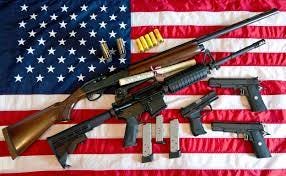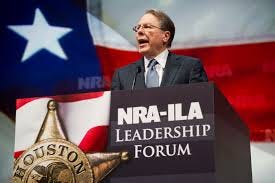NY Rifle Case in S Ct: Judicial Malpractice Allowing Open Carry for all Firearms Including AR-15, Rifles, Shotguns and Handguns
Majority Textualists Ignore Half of Second Amendment
One has to wonder how the new Supreme Court conservative (i.e. Radical) majority can ignore the facts and the law in reaching a decision. But they did in the NY Rifle Case in their decision allowing open carry of all firearms without distinction or limitation to handguns. New York State Rife & Pistol Association v. Bruen, 597 U.S. __ (June 23, 2022) (Majority Opinion by J. Thomas). Without giving any recognition to the mass shootings that have occurred of schoolchildren, grocery shoppers, nightclub attendees, outdoor music concert goers, and people standing on a public street and others, the Supreme Court misinterprets the Second Amendment to allow armed individuals to carry all types of firearms in public without state limitation on who can carry deadly weapons.
In the NY Rifle case, as Justice Breyer pointed out in dissent, the Majority decided the case even though no discovery had taken place and no full evidentiary hearing had occurred, so there was no record of facts on how the NY licensing regulations actually applied in practice. They decided the case based on their interpretation of the Second Amendment and the Fourteenth Amendment, insofar as the latter applied the Second Amendment to the States.
The Majority all call themselves originalists and textualists meaning they supposedly decide Constitutional cases based on the original meaning of the Constitutional provision at issue as it was interpreted and understood on adoption in 1791, and as textualists they limit themselves to the actual text of the Constitution. Despite their self-adopted descriptions of how they decide cases, the actuality is quite different.
The text of the Second Amendment says the following:
A well regulated Militia, being necessary to the security of a free State, the right of the people to keep and bear Arms, shall not be infringed.
J. Scalia started the misinterpretation of the Second Amendment in the Heller case which struck down a D.C. limit on handguns by completely ignoring the first half of the Second Amendment, and his deletion was followed in McDonald and now in NY Rifle. According to the conservative Majority, the Second Amendment only states “the right of the people to keep and bear Arms, shall not be infringed.” For Justices who call themselves textualists, how do they interpret a Constitutional provision by completely ignoring half of it? They interpret the text they like and ignore the rest.
At the time the Second Amendment was adopted in 1791, the country had recently won its War of Independence from Britain, and the colonists were principally organized in militias to defend themselves from British attacks and to launch offensive raids against them. Militias were the military form of organization. But militias also played an important role in the War of 1812 with Britain and then again in the Civil War where U.S. armies were divided into militias from the several States. So, militias were a principal form of military organization in 1791 when the Bill of Rights was ratified and in 1868 when the Fourteenth Amendment was adopted, incorporating the Second Amendment to apply to the States. So how could these textualists and originalists Justices ignore all reference to the first half of the Second Amendment dealing with a well regulated Militia being necessary? One can interpret statutes or constitutional provisions to get your desired result if you ignore half of it.
That is not to say that the meaning of the Second Amendment is clear. Some historians believe the framers did not want a professional standing national army, so they provided that well regulated Militias would continue to be the principal form of military organization as it was through the Civil War, but where the militias were then combined into the Army of the Potomac, the Army of the Shenandoah, the Army of the Mississippi and others and finally the Union Army. So, the Founders wanted to make sure there were sufficient trained and armed citizen soldiers to staff the militias, and they did not want laws preventing citizens to have guns to limit their participation in the militias. Prior to Heller, the majority of courts held that the Second Amendment only applied to arming members of militias and did not convey an individual right to bear arms. Heller changed that by ignoring the whole text so Scalia could get the result he wanted.
Having freed themselves from militias, J. Thomas says that we interpret the Second Amendment right to bear arms by looking at the historical record of limitations on firearm ownership. One may ask what does the history of firearm regulation in Britain and in the States of the U.S. have to do with interpreting the Second Amendment. He seems to search for a consensus on regulating arms ownership and usage, but what do the “votes” (i.e. regulations) adopted by Britain from 1290 to the present have to do with this case? He cites Blackstone’s Commentaries on the Laws of England, demonstrating his law clerks could find it, but to what end?
Thomas then moves to the colonies and examines gun regulations in colonial America. Perhaps he is doing a balancing test putting the various laws on a scale and seeing which group weighs more. He then moves to the period after the Revolutionary War and before the Civil War, but outside of interesting history, what does it have to do with New York’s gun licensing laws in 2022? Of course, some statutes and regulations impose strict requirements and some do not, but so what?
One of my favorite lines is Thomas’ statement that “not all history is created equal.” So he can pick and choose what he likes and what he rejects. He then encounters real trouble with the recognition that the post-Civil War western territories tended to all impose strict limits on gun carrying in public. He wonders why this was necessary, so apparently a Majority of the Court who agreed with Thomas never heard of the Wild West and efforts to tame it.
But nothing can compete with J. Thomas favorably citing the outrageous Dred Scott decision holding that Black people could not be citizens of the United States. Thomas states,
Even before the Civil War commenced in 1861, this Court indirectly affirmed the importance of the right to keep and bear arms in public. Writing for the Court in Dred Scott v. Sanford, 19 How. 393 (1857). Chief Justice Taney offered what he thought was a parade of horribles that would result from recognizing that free blacks were citizens of the United States. If blacks were citizens Taney fretted, they would be entitled to the privileges and immunities of citizens, including the right “to keep and bear arms wherever they went.” Id. at 417 (emphasis added).
Having J. Thomas favorably citing Dred Scott is breathtaking, and the other five members of the right-wing conservative majority allowed it to remain in the Opinion of the Court (which was revised on July 29, 2022, but Dred Scott remains.
To recover, J. Thomas cites General D.E. Sickles who issued a decree in 1866 pre-empting South Carolina’s Black Codes that prohibited firearm possession by blacks, and the General said,
The constitutional rights of all loyal and well-disposed inhabitants to bear arms will not be infringed; nevertheless this shall not be construed to sanction the unlawful practice of carrying concealed weapons…. And no disorderly person, vagrant, or disturber of the peace, shall be allowed to bear arms.
During Reconstruction many States adopted gun limitations prohibiting use of guns to terrorize people. But J. Thomas noted Tennessee enacted in 1870 a “prohibition on the public carry of handguns, but as explained above, Tennessee courts interpreted that statute to exempt large pistols suitable for military use.” So, Thomas is telling us that Tennessee allowed public carry of pistols suitable for military use. So, in today’s world that would allow public carry of automatic pistols which have been used in several mass shootings.
Thomas then discussed two Texas cases from 1871 and 1875 which he calls outliers:
In 1871, Texas law forbade anyone from “carrying on or about his person … any pistol… unless he has reasonable grounds for fearing an unlawful attack on his person. … The Texas Supreme Court upheld that restriction in English v. State, 35 Tex, 473 (1871). The Court reasoned that the Second Amendment, and the States’s constitutional analogue, protected only those arms “as are useful and proper to an armed militia,” including holster pistols, but not other kinds of handguns.
J. Thomas recognized that the Texas statute and cases supported New York’s “proper cause requirement.” So, he dismissed the Texas cases saying they were outliers. Remember Thomas’ admonition that not all history is created equal, and if you do not like a result, dismiss or ignore it, Similarly, he rejected the western Territorial statutes enacted to help tame the Wild West, but this time due to the low population density of the western Territories compared to established States back east.
One has to wonder what these historical journeys and rejections of results have to do with the meaning of the Second Amendment as applied to the New York licensing statute. I would say not much. Thomas treats history like fungible jello which he can twist and turn as he and a majority of the Court see fit. But is this piecemeal historical analysis of any benefit in interpreting the Second Amendment of the Constitution? I think not.
Thomas concludes the Opinion stating, “New York’s proper cause requirement violates the Fourteenth Amendment in that it prevents law-abiding citizens with ordinary self-defense needs from exercising their right to keep and bear arms.”
That is a rather vague and ambiguous conclusion. Earlier in his Opinion Thomas states that the Second Amendment applies to all forms of firearms not just handguns. Does that mean I can buy an AR-15 automatic rifle, like the kind used in many mass shootings, and get licensed to publicly carry it if I claim to have self-defense needs? Can I get licensed to carry an automatic rifle or a bolt action rifle in public if I have self-defense needs. How about a nice 12 gauge shotgun for which I could be licensed and carry it down the street for my self-defense? If I could legally obtain a bazooka, could I get licensed and carry it with me? Imprecision in the conclusion is not helpful.
J. Barrett then has to add to the confusion in her Concurring opinion where she says, “But if 1791 is the benchmark [for interpreting the Second Amendment], then New York’s appeals to Reconstruction era history would fail for the independent reason that this evidence is simply too late. … “[A} practice that arose in the second half of the 19th century … cannot by itself establish and early American tradition.” But if the date of adoption of the Fourteenth Amendment in 1868 is the benchmark, then those Texas cases and others in Reconstruction would be relevant. Since Thomas decides the case under the Fourteenth Amendment, Reconstruction laws and western Territorial laws of the Reconstruction period are certainly relevant.
But one has to question the premise of the originalists and semi-textualists that we must interpret the Constitution solely as it was meant in 1791. This is their frigid Constitution thesis. But the further fallacy in their approach is that the Founders were all independent thinkers who battled over the words and content of the Constitution, and claiming (1) that they all had the same identical view on the meaning of a provision and (2) we can discern in 2022 their unanimous understanding in 1791 verges on ludicrous. Then if the originalists find history they do not like, they deem it not equal to other history they prefer, or they distort the “common understandings” when there are none.
So, NY Rifle is itself an outlier in Constitutional jurisprudence, and hopefully its mash mash of supposed legal and logical analysis does not last for long. It is what it is: a political decision by politicians in black robes.








This is the type of commentary I hoped to find here.
Thank you so much Mr. Beck for sharing.